












Gentle Running and Living
by Dr Patrick Salmon, PharmD, PhD
Member of the Barefoot Runners Society
Founding Member of the Tarahumara Spirit



Be gentle
to yourself
and others!
“Life is hard enough to add extra suffering to it”. We propose here a way to build a stronger, healthier and happier self through gentle running. Then, this “ascetic hedonism” can be translated into several aspects of life, to humbly contribute to a better world.

You can help your fellow humans and the world in general by sharing this site and its links.
You can join me at this email: drbarefootpat@gmail.com

Version française (en construction) à ce lien.


My blog
This page is under constant construction since I update it regularly with feedbacks from my students of all levels (beginners to below-3h-marathoners.
So, come back often for updates
Transition to Natural Runner Style with patient building of strong lower legs
One you have these shoes
- STEP1
- Go running for 5 to 10 minutes, 1 km to 2 km, maximum, applying all the principles of Natural Running:
- Short strides
- Land as smoothly, as silently as possible.
- High cadence (180 steps per minute is optimal, 160 is minimal)
- Land under your center of mass
- Adopt the Spanish Dancer posture, as described in the other pages.
- Lift your foot/leg as soon as you touch the ground, by pulling your knee up (never push on the ground with your foot to move forward)
- At the end of your run, do the stretchings described in the specific page. These stretchings are essential since you are putting a lot of stress in your calf muscle and Achilles tendon, and you will soon discover that they are atrophied.
- The next day, do not run but feel your calves and Achilles. It is very likely that you will feel very sore and may even have trouble climbing down stairs. Be gentle to yourself.
- Once the soreness/tightness of the calves is gone and the Achilles tendons are cool again (it could take 2 or 3 days), run the same distance/time as above. Do the same stretchings after each run.
- Do this routine until you do not feel any muscle soreness in your calves or any tendonitis in your Achilles in the days following the run. This can take several weeks. Be patient and humble, you are constructing powerful legs for the rest of your life.
- STEP2
- When you reach the point where there is no soreness/tightness of the calves and no Achilles tendons inflammation after your run, you are a 1-2 km-Natural Runner, and you can increase the length of the Natural Running in your regular workout.
- So make it 2-3 kms.
- Do exactly as in STEP1, until you are not sore at all after the run, and then move to next step.
- STEP3
- Go to 3 to 5 kms, and so on and so forth, until you reach 10 kms of Natural Running.
- At step 5 kms, you may want to go to 7 kms directly, but go back to 6 kms if you feel it is too much and/or the recovery takes too long.
- Remember, humility and patience are essential here since you are building something BIG.
- STEP4
- Once you can run 10 km Natural, 2 to 3 times per week, you can consider yourself a Natural Runner.
- A
- And you can start increasing the distances, 15kms to 20 kms, and more. But always, very GENTLY and progressively. Go back to shorter distances and slower paces if you notice that the Calf Muscles and/or the Achilles’ tendon are not totally recovering between sessions, especially if you carefully apply the standard Stretchings, or the Eccentric Stretchings, plus the Stick masages.
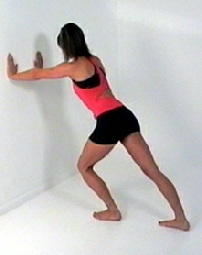
What to do if you experience
Unusual soreness or stiffness of the Calf Muscles
Or
Achilles’ tendonitis that is not improving
- The 1st rule is to lower the amount of exercise but DO NOT STOP COMPLETELY. Indeed, inflammation is the sign of an active repair process in which active use plays a crucial role.
- Second, NEVER TAKE ANTI-INFLAMMATORY DRUGS. This will stop the repair process, stop the progression and may even worsen the tendonitis up to the rupture of the Achilles’ tendon.
- Instead, follow the instructions provided on the specific page for specific Stretchings and Massages.
What you need first is a pair of real running shoes
- These shoes are flat, i.e. there is no height difference between the heel and the front so that your foot does not have to tilt forward when contacting the ground. The more the drop, the more you prevent your foot to function naturally. Zero-drop shoes allow Natural movement of the foot.
- These shoes have little cushioning, to allow the foot to adapt the ground when landing. This favors propioception and makes your foot and ankle stronger and thus less prone to injury. Still, you need some cushioning to protect your foot from sharpies, pointy pebbles, etc.
- These shoes have no arch support. The human foot has 3 arches, including the plantar arch, which are designed to collapse during landing (go to the Foot Page for more details). It is not only normal but it is also essential for shock absorption and energy storage. Pronation is Natural and should not be prevented while running. Only Brick-and-Mortar salesmen with utter ignorance of foot physiology and human biomechanics will try to sell you “pronation-support” shoes for running. Arch support may however apply for walking shoes.
- These shoes must be chosen wide, to allow the foot and the toes to move freely to adapt to the ground.
- I have tried and recommend the following shoes, even for people with wide feet, like myself:
- Merrell Trail Glove 2 for all terrain including roads
- Merrell Ascend Glove for very muddy terrains
- Skechers GoBionic for the road
- Skechers Gobionic Trail for any conditions including muddy, slippery and technical trails
- Inov-8 shoes from the Zero-drop series for people with narrow feet
- Huaraches from Xeroshoes for truly Natural Running.
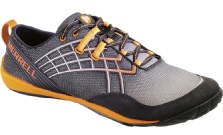
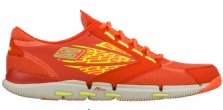
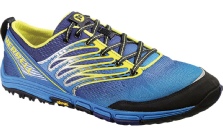


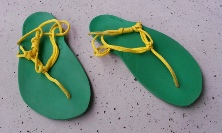
More info, comments and advice on shoes in the Shoes page